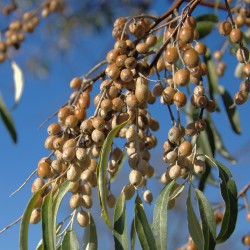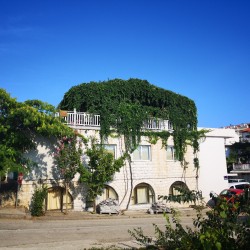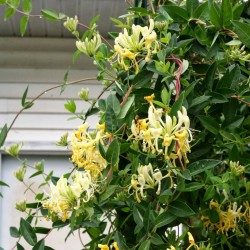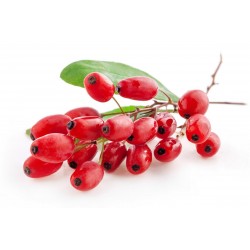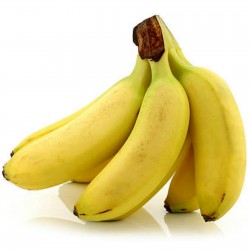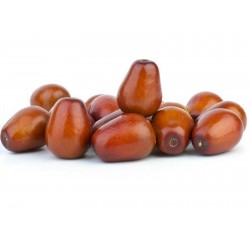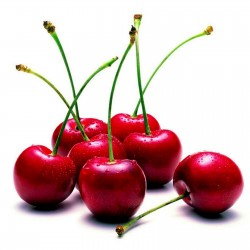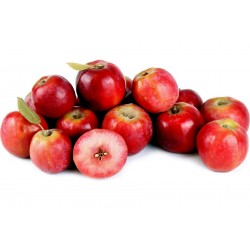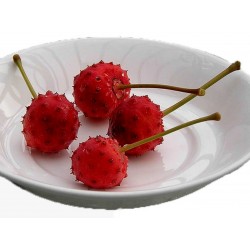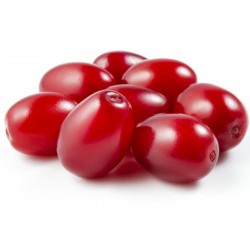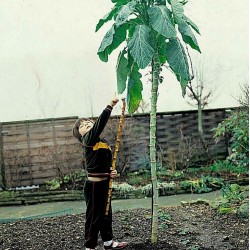Seeds Gallery Com,
5/
5
<h2 class=""><strong>Σπόροι Σιβηρίας Crab Apple (Malus baccata)</strong></h2>
<h2><span style="color: #ff0000;"><strong>Τιμή για το πακέτο των 10 σπόροι.</strong></span></h2>
<p>Hardy, Προσαρμόζεται, εύκολο να αυξηθούν, η Ραγδαία Ανάπτυξη, μπονσάι, espalier, επιδεικτικός λουλούδια, επιδεικτικός βρώσιμα φρούτα, προσελκύει πουλιά, άγρια ζωή Τροφίμων / Καταφύγιο, κρύο, ξηρασία και Άνεμος ανεκτική.</p>
<p><strong>Hardy, Adaptable, Easy to Grow, Fast Growth, Bonsai, Espalier, Showy Fragrant Flowers, Showy Edible Fruits, Attracts Birds, Wildlife Food/Shelter, Cold, Drought and Wind Tolerant</strong></p>
<p>Siberian Crab Apple is a deciduous tree with a rounded canopy of spreading branches, ultimately reaching 20 to 50 feet in height. The Siberian Crab Apple is among the earliest of all crab apples to flower. The very fragrant blooms appear in great abundance and the single, 1 1/2 inch flowers are pink when in bud but open up to white. The blooms are followed in fall by long-lasting, usually bright red and sometimes yellow fruits which are very popular with the birds or can be used to make jelly.</p>
<p>Apple trees begin to fruit in the 3rd year and come into full production from the 11th to 20th year. They may continue to fruit for about 100 years although the fruits may become commercially unprofitable. They require a period of winter dormancy, in general 900-1000 hours of more at less than 45°F. They performs best in areas with medium to low humidity, with long daylight hours, high light intensity and relatively warm days and cool nights.</p>
<p><strong>Other Names:</strong> Siberian Crab apple, Siberian Crabapple</p>
<p><strong>Zone:</strong> 2 to 7</p>
<p><strong>Growth Rate:</strong> Moderate</p>
<p><strong>Plant Type:</strong> Small deciduous fruiting tree</p>
<p><strong>Family:</strong> Rosaceae</p>
<p><strong>Native Range:</strong> Eastern Asia<br><strong>Height:</strong> 20 to 35 feet<br><strong>Spread:</strong> 15 to 25 feet<br><strong>Shape:</strong> Rounded small tree with a dense crown.</p>
<p><strong>Bloom Time:</strong> April-May</p>
<p><strong>Bloom Color:</strong> White<br><strong>Flower/Fruit:</strong> White fragrant flowers followed by red or yellow 1/2 inch edible fruit.</p>
<p><strong>Sun:</strong> Full Sun</p>
<p><strong>Fall Color:</strong> Yellow</p>
<p><strong>Drought Tolerance:</strong> Moderate</p>
<p><strong>Water:</strong> Medium<br><strong>Maintenance:</strong> Medium</p>
<p><strong>Site Requirements /Soil Tolerances</strong>: Best grown in loamy, medium moisture, well-drained, acidic soil in full sun. Adapts to a wide range of soils.</p>
<p><strong>Culture:</strong> Promptly remove root suckers to control spread. Responds well to pruning and may be used as a hedge plant.</p>
<p><strong>Uses:</strong> Bonsai, espalier, screen, specimen, street tree, shade tree.</p>
<p><strong>Fruit Uses:</strong> The fruit can be eaten fresh, or used to make cider, soft drinks, juice, and vinegars. Pectine is a valuable by-product of cider. The fruit is excellent for jams and jellies. The wood is hard and strong and used for quality tool handles and firewood.</p>
<p><strong>Sowing Malus baccata Seeds:</strong></p>
<p>For best results, please follow the instructions in the order provided.</p>
<p><strong>Scarify:</strong> Soak in water for 24 hours</p>
<p><strong>Stratify:</strong> <strong>Cold 30-75 days, 40 Degrees F in a Moist Medium.</strong></p>
<p><strong>Germination:</strong> <strong>Sow 1/8” Deep</strong></p>
<p>For more information about seed pretreatment and growing trees and shrubs from seed, please try the following links:</p>
<p><strong><a href="http://www.forestry.gov.uk/pdf/fcpg018.pdf/$file/fcpg018.pdf">http://www.forestry.gov.uk/pdf/fcpg018.pdf/$file/fcpg018.pdf</a></strong></p>
<hr>
<p><strong><a href="http://www.forestry.gov.uk/pdf/fcpg018.pdf/$file/fcpg018.pdf"></a></strong><strong></strong></p>
<p><strong>WIKIPEDIA:</strong></p>
<p>Wild apple (lat.: Malus baccata) is an Asian species of apple known by the common names Siberian crab apple, Siberian crab, Manchurian crab apple and Chinese crab apple. In the forests across Europe, today also grow a few varieties of wild apples. It is native to much of northern Asia, but is also grown elsewhere as an ornamental tree and for rootstock. It is used for bonsai. It bears plentiful fragrant white flowers and edible red to yellow fruit of about 1 cm diameter.</p>
<p><strong>Distribution and habitat</strong></p>
<p>Malus baccata is native to Russia, Mongolia, China, Korea, Bhutan, India and Nepal, where it is common to mixed forests on hilly slopes at elevations up to 1500 meters (5000 feet). The tree is found in Japan, and it has also been introduced to Europe and to North America, where it is found in the wild mostly in the Great Lakes Region and in the Northeastern United States.</p>
<p><strong>Features</strong></p>
<p>Trees grow up to 10–14 meters (33-47 feet) high. They have arching or overhanging red-brown branches and red-brown buds. Petioles are 2–5 cm (0.8-2.0 inches) long, with few glands. Leaves are elliptic or egg-shaped, (3–8)×(2–3.5) cm ((1.2-3.2) × (0.8-1.4) inches). Pedicels are slender and 1.5–4 cm (0.5-1.6 inches) long. They bear white fragrant flowers of 3–3.5 cm (1.2-1.4 inches) in diameter which groups by 4–6. Petals are white and egg-shaped, approximately 2–2.5 cm (0.8-1.0 inches) long. Fruits are red to yellow and spherical, only about 1 cm (0.4 inches) in diameter; they form dense clusters and resemble cherries from a distance. Flowering occurs in spring, with fruits appearing in September–October.</p>
<p><strong>Uses</strong></p>
<p>Malus baccata is used as ornament for its flowers and fruit. Fruits are edible and are eaten fresh or dried. As one of the tallest and most resistant to cold and pest species of its genus, M. baccata is used for experimental breeding and grafting of other crabapples and domesticated apples as well</p>
<p> In particular, it is a common genetic source for M. pumila and M. asiatica in northern and north-eastern China. M. baccata var. mandshurica is used for bonsai.</p>
<script src="//cdn.public.n1ed.com/G3OMDFLT/widgets.js"></script>
V 200 (10 S)






